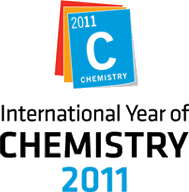Every half-reaction above is written as the reduction
of an oxidizer, but the reverse direction (the oxidation of the reducer on the
right-hand side) is more common for the reactions with a low
redox potential (listed in volts V):
In a complete redox reaction,
a reduction occurs as written above
only if a balancing oxidation
with a lower redox potential occurs in the reverse direction.
For example, the nitrate ion has a higher potential than the cupric ion and
nitric acid may thus oxidize copper metal.
(The opposite is true between hydrogen and cupric ions,
so an ordinary acid can't oxidize copper.)
2 NO3-
+ 4 H +
+ Cu
®
2 NO2
+ 2 H2O
+ Cu++
In a balanced redox reaction, the difference Df
between the potentials of both half-reactions is simply
the change in free enthalpy DG
(G = H-TS) per unit of electric charge transferred.
If n moles of electrons are involved, this translates into
n moles of electronvolts in DG
for each volt in Df. Therefore:
DG
= -n F Df
= -n Df
(96485 J/V)
= -n Df (23.06 kcal/V)
A joule per volt (J/V) is a coulomb (C).
The bracketed factor corresponds to a mole of electrons
(Faraday's constant, F ) in two
different units.
Only the Df (or DG)
of an actual redox reaction has a physical meaning,
while all the half-reactions are convenient fictions
whose redox potentials are defined within an additive constant,
which is conventionally set to 0 V for hydrogen.
[Another convention is used for the related "Oxydo-Reduction Potential" (ORP)
measured directly for aqueous solutions, which lets 1 V be the ORP of chlorine.]
The standard redox potential
(Dfo )
tabulated for a normal pressure of 1 atm (101325 Pa)
at 25°C (77°F) is understood for unit
(1M) concentrations of
both reactants and products, otherwise the
Nernst equation
is used:
| DG =
DGo + n
|
RT |
ln ( |
[products] |
) |
 |
| [reactants] |
| |
| Df =
Dfo -
|
RT |
ln ( |
[products] |
) |
 |
 |
| F |
[reactants] |
Therefore, even if the comparison of standard redox potentials seems to
imply that a reaction does not occur, what actually evolves is an equilibrium
where the concentration of "products" is small, or even utterly negligible...
Note that RT / F = kT / e is equal to
25.6926 mV (at 25°C = 298.15 K).
This is precisely the thermal voltage which appears in
Shockley's Ideal Diode Equation and elsewhere...
Wikipedia:
Standard electrode potential
(table)
Standard Reduction Potentials
at 25°C by Ken Costello
(Chemistryland)
Standard
Reduction Potential
(UC Davis ChemWiki)
Standard Reduction Potentials
(Reference Tables for Chemistry) by Harry Clark
Standard Reduction Potentials & Temperature
Coefficients in Water at 298.15 K by Sreven G. Brascht (1988)
Calculating the standard half-cell reduction potential
(Chemical Forums) by Kimi85 & Borek

